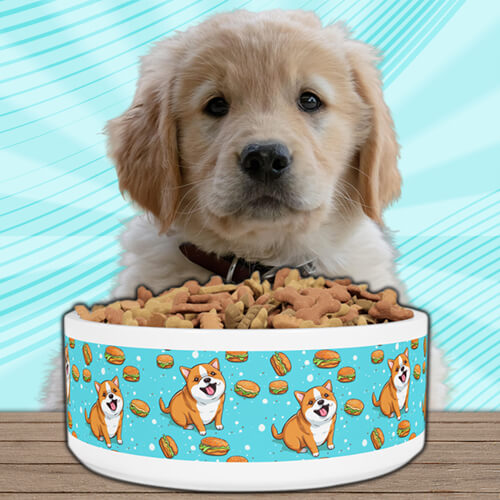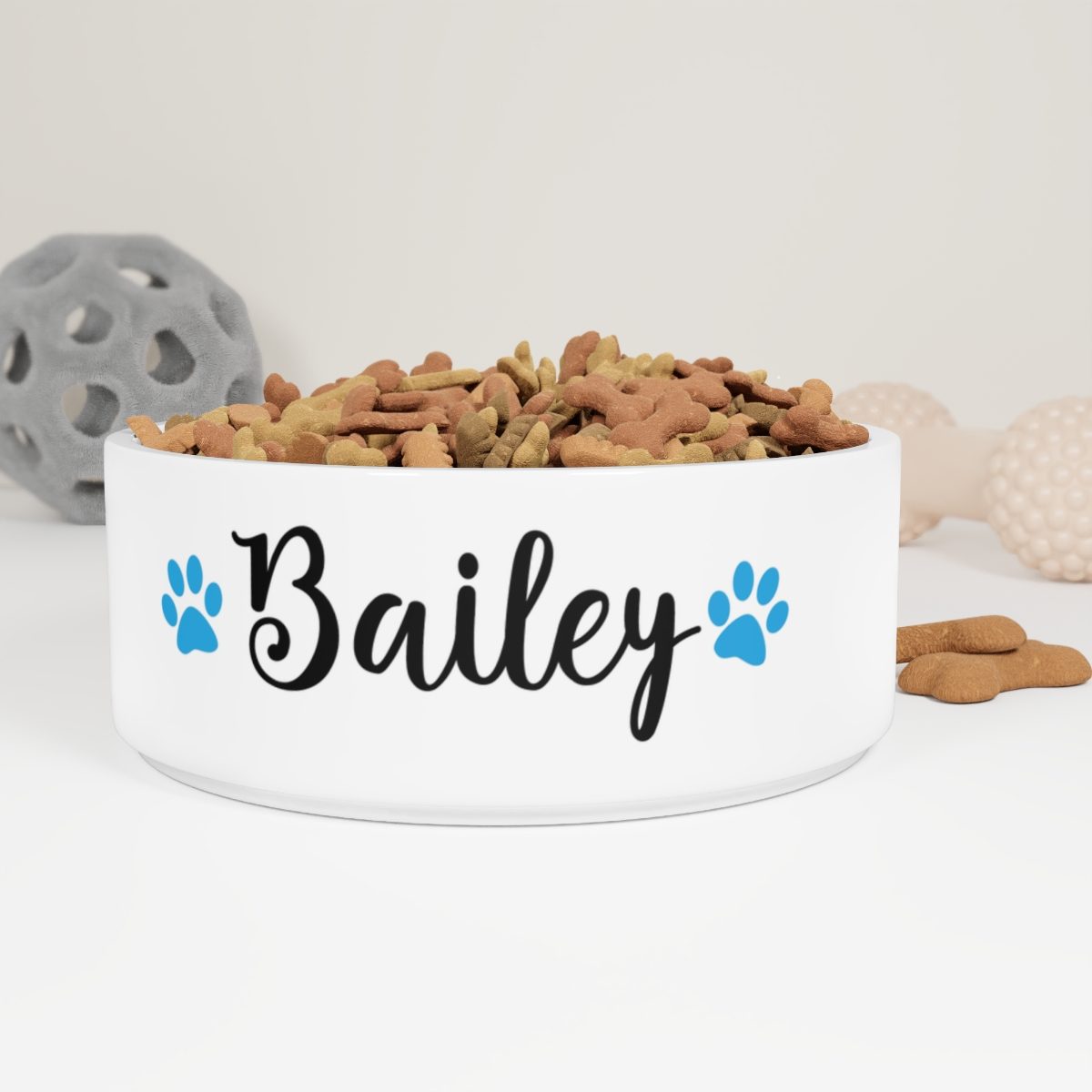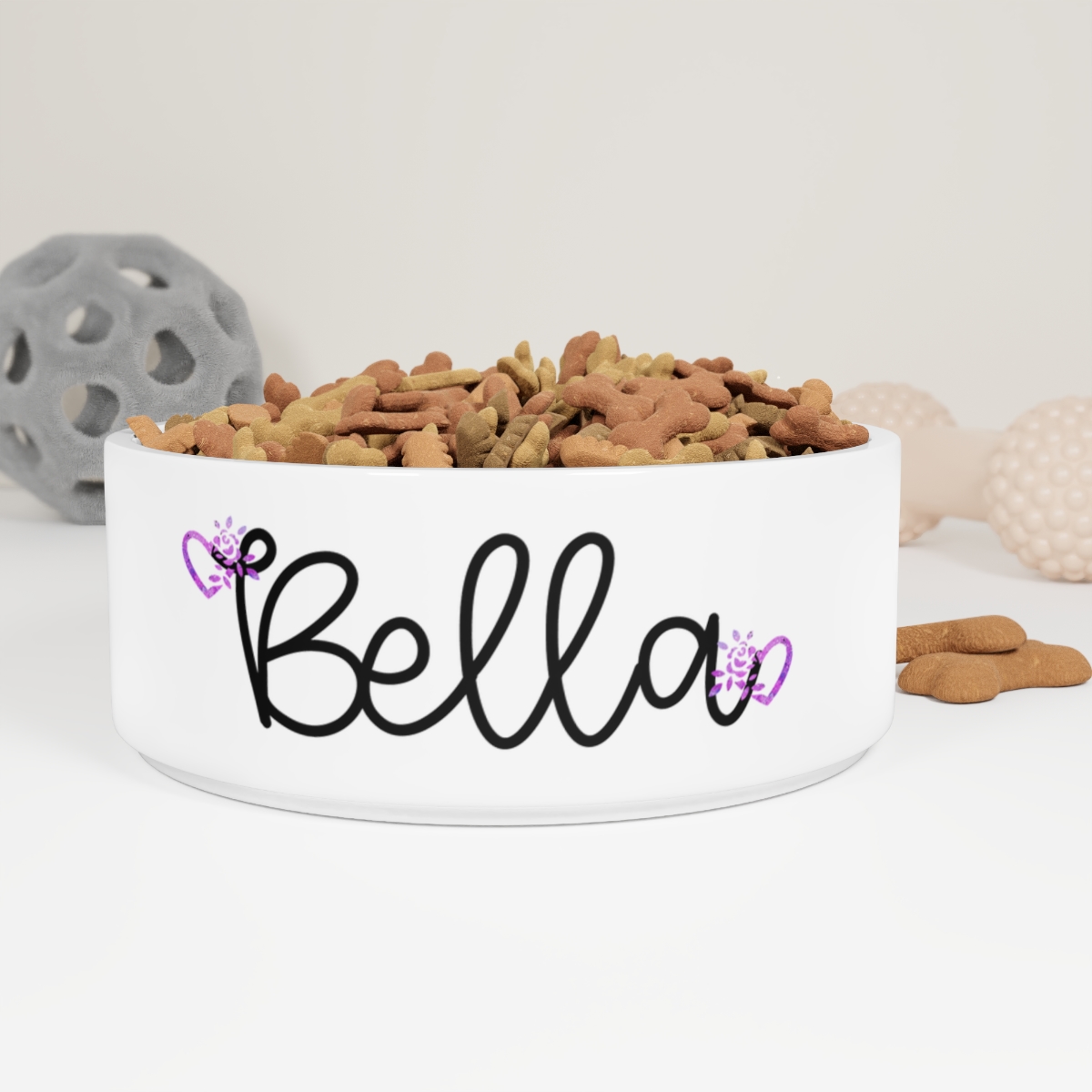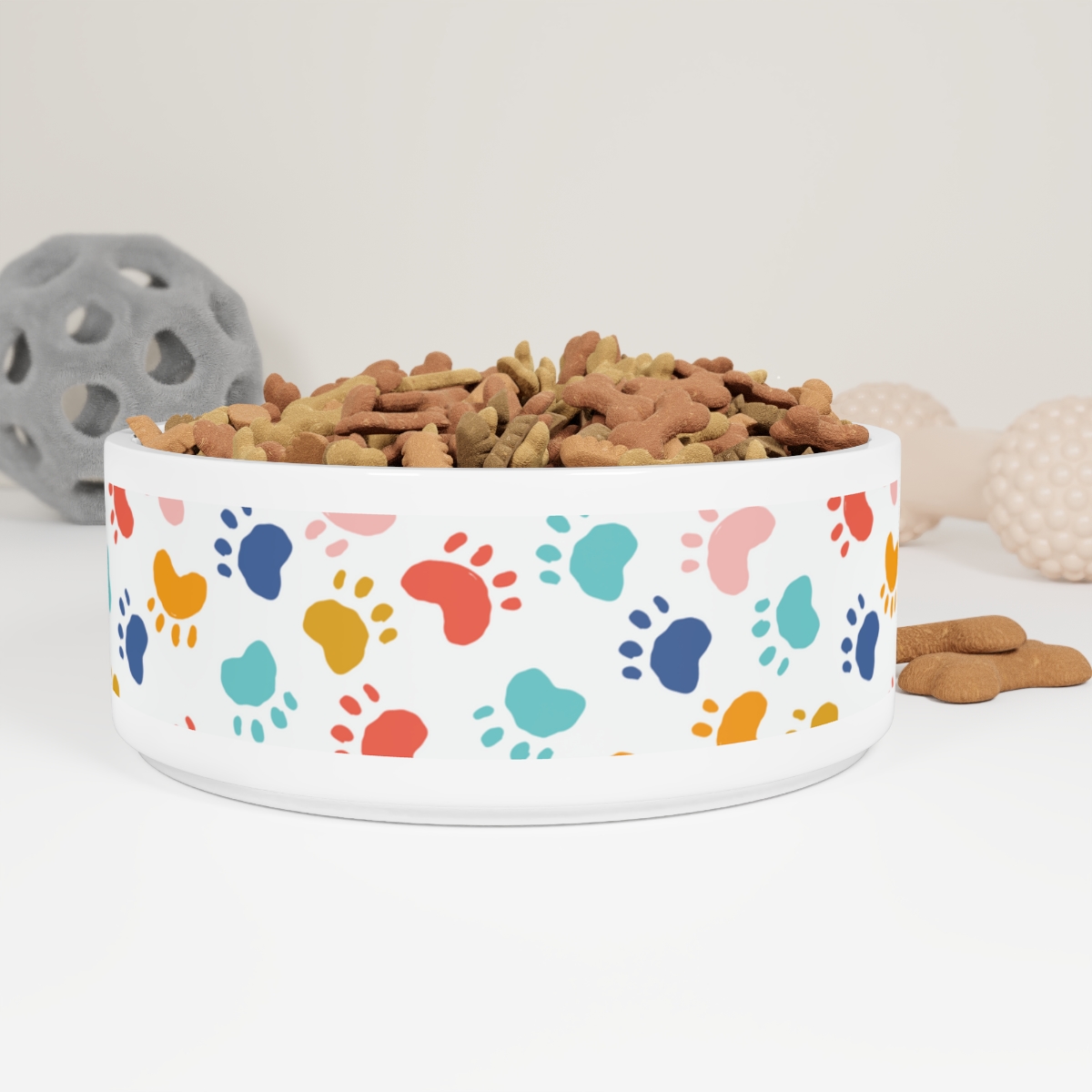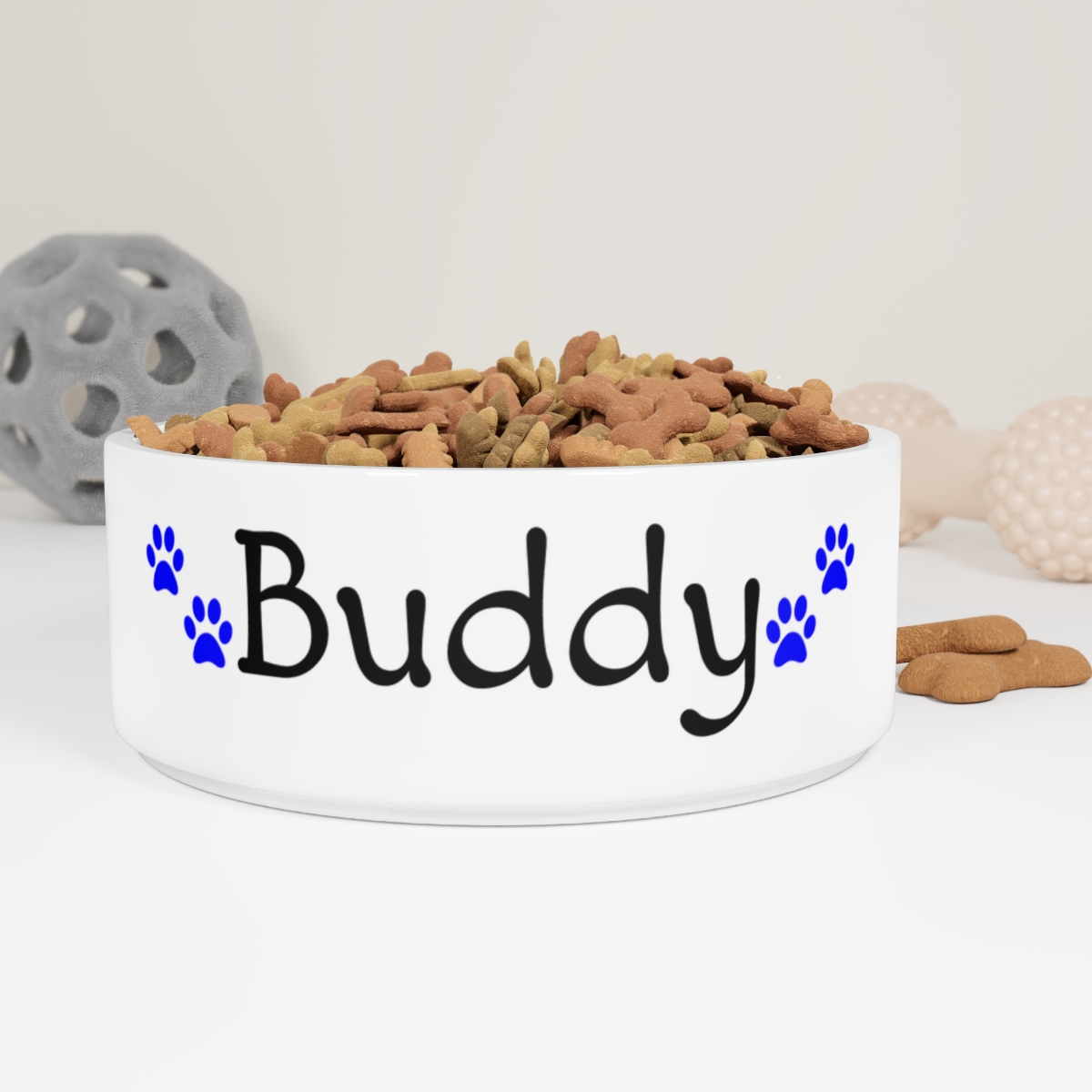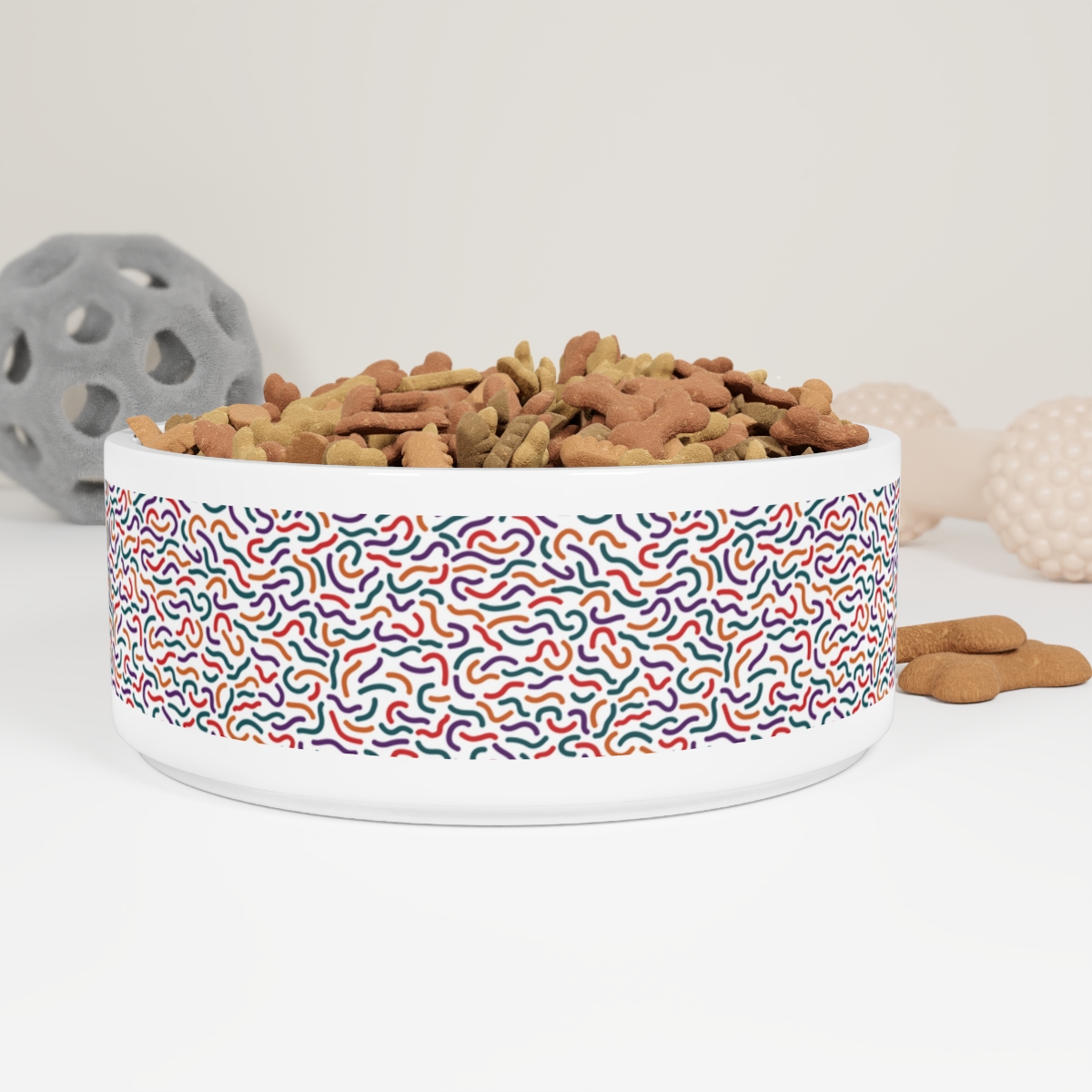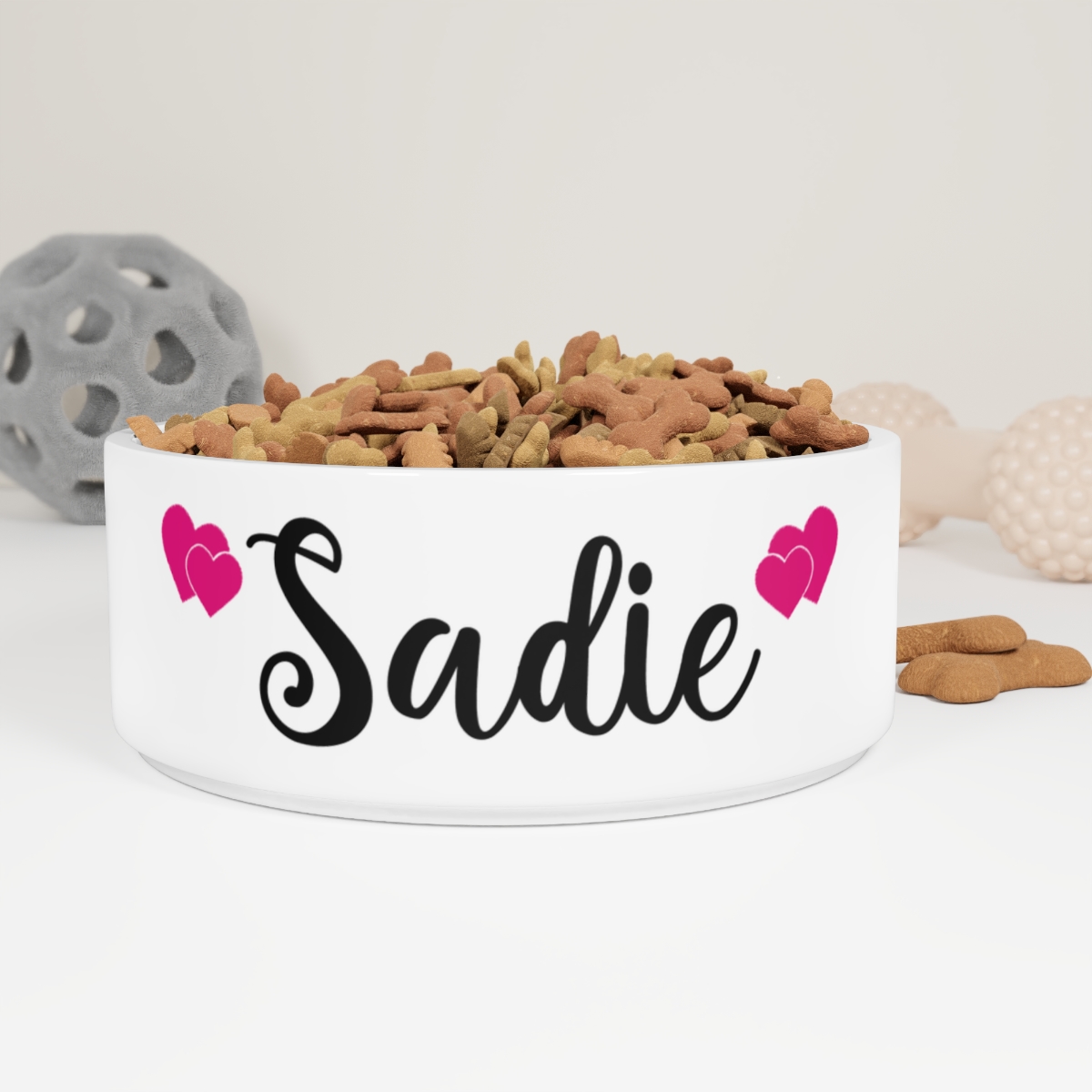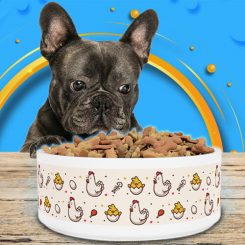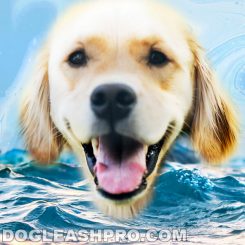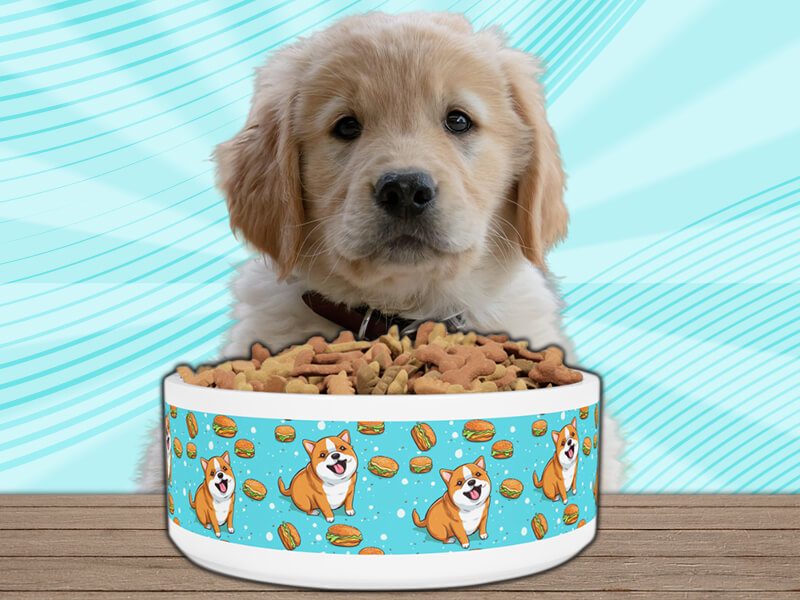
Are Ceramic Bowls Safe For Dogs? Yes, Ceramic Bowls are safe for dogs. These bowls are made by baking clay-based materials at high temperatures until the bowls harden. The results are incredibly hard and durable Ceramic Bowls with smooth edges that won’t hurt our dog’s mouth. Ceramic Bowls are also free from BPA which is known to cause health problems in dogs.
The market today is saturated with dog products that I myself find quite hard to choose. One of these is the dog bowls. There are plastic, stainless, silicone, glass, and Ceramic Bowls to choose from. I wanted to check out the ones made with ceramic, so I asked my dog-lover friends if Ceramic Dog Bowls are safe and indeed it is.
So, if you’re on the lookout for new dog bowls, this article is all about informed choices. I’d share with you my thoughts and experiences on why I consider Ceramic Bowls the safest in the market.
RECOMMENDED: Why Does My Dog Nudge His Food Bowl Before Eating? 10 Reasons Why!
Table of Contents
Are Ceramic Dog Bowls Safe?
Yes, Ceramic Dog Bowls are safe. Aside from not having any toxic materials like BPA, Ceramic Bowls cannot be chewed and chipped off by our fur babies, making these very safe and the best dog food and water bowls that you can purchase for your fur baby.
CHECK OUT: How Long Can A Dog Go Without Water?
Plus, Ceramic Dog Bowls have an insulating effect, keeping food and water at nice and warm or cold temperatures. This is especially helpful for dogs with a special preference for drinking either warm or cold water.
Best Food And Water Bowls For Dogs
Before I discovered Ceramic Bowls for dogs, I used to feed my white French Bulldog with plastic bowls.
While these plastic feeding bowls did a good job, I found out that some dogs are allergic to plastic because of the dye used in making these bowls colorful. No wonder my fur baby always had contact dermatitis in his mouth area.
Personally, I think Ceramic Bowl is a good dog bowl because it is made with dog-safe materials. Plus, bacteria are not attracted to ceramic material.
While choosing the right bowl is essential, understanding your dog’s behavior around their food is also crucial.
For instance, some dogs tend to play with their food, and there are various reasons behind this behavior. Learn more about why dogs play with their food in this detailed article: Why Do Dogs Play With Their Food?
What Are Some of The Safest Dog Bowls?
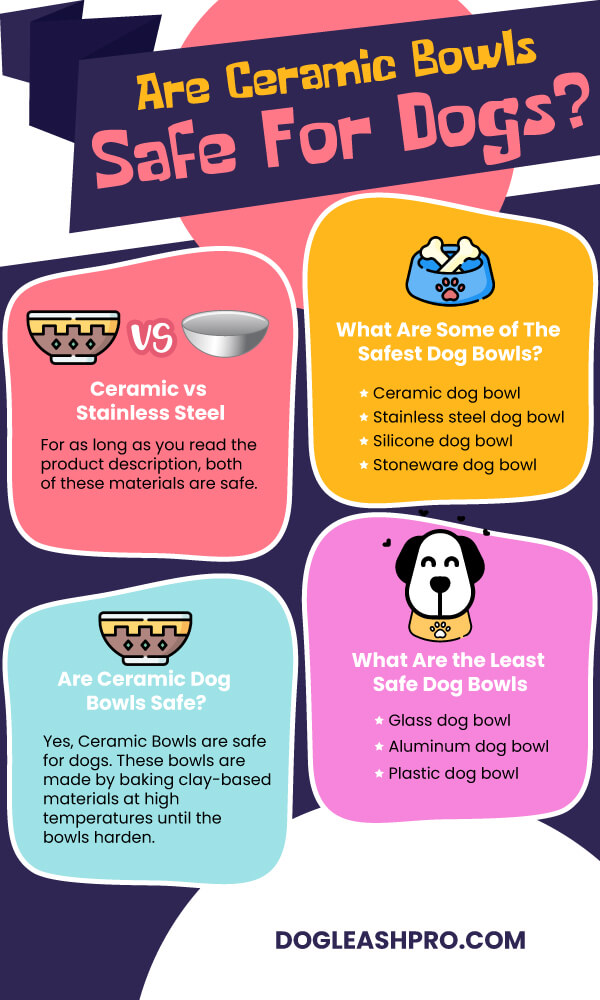
If you think dog feeding bowls are all the same, think twice. Feeding bowls is as important because those things will be used by our dogs for the rest of their lives.
Aside from the size, safety is another important factor to think of when choosing the safest bowls for dogs. By safest, I am referring that these should be non-toxic dog bowls and are certified as lead-free dog bowls.
Based on my experience and that of my dog owner friends, here are the four (4) safest dog food bowls to choose from:
1. Ceramic dog bowl
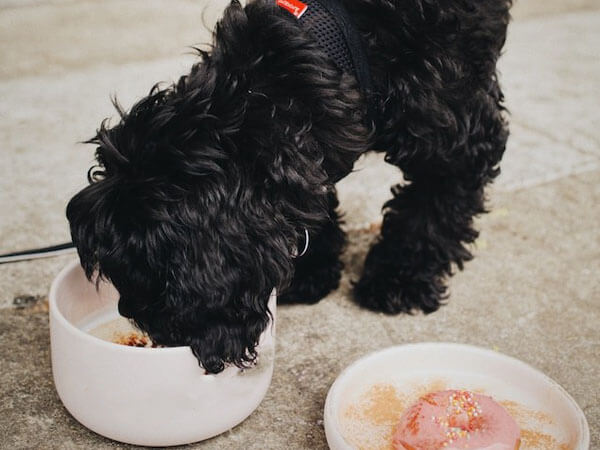
Not discounting that Ceramic Dog Bowls come in different designs making them aesthetically pleasing, these are some of the safe dog bowls for our fur babies, too.
First, most Ceramic Bowls are not made with toxic materials. Choose brands that are lead-free or dog-safe written on the packaging.
Second, like all dogs, my fur baby enjoys running around the house. Good thing Ceramic Bowls are heavy so he cannot topple it easily.
Third and what I love the most is that Ceramic Bowl does not harbor bacteria making it very safe for my dog.
Plus, it’s easy to clean and on days when I am rushing, I just place it in the dishwasher.
Considering all those factors, I’d say that ceramic is one of the best dog bowls on the market today.
And, for puppies, the best dog bowls for puppies are also ceramic because they won’t topple no matter how playful they can get.
2. Stainless steel dog bowl
What is the next safest dog bowl material? Stainless steel is also a safe choice because it’s durable, and does not crack easily.
Stainless steel dog bowls are often made with non-slip rubber at the bottom to prevent spilling food and water.
A stainless steel bowl is non-porous so it does not attract bacteria, is easy to clean, and is lightweight.
Take note that not all stainless steel dog bowls are created equal because stainless steel comes in various grades.
High-quality stainless dog bowls are made with either 200 or 300 stainless steel series, both of which are food-safe, the difference is mainly in durability.
3. Silicone dog bowl
I love taking my dog to the park. Since Ceramic Bowls are heavy, I bought a silicone dog bowl because it’s collapsible, making it very convenient for traveling.
Cleaning a silicone dog bowl is not much of an effort either. It’s heat-resistant and best of all, it does not harbor bacteria.
But if your dog is a strong chewer like a grey Pitbull, keep the silicone dog bowl out of his/her sight because silicone is not a super tough material.
4. Stoneware dog bowl
Similar to ceramic, stoneware dog bowls are made with clay and then fired over high temperatures, and then finished off with lead-free glaze.
These dog bowls are safe from bacterial contamination and are very durable.
What Are the Least Safe Dog Bowls?
There are other dog bowls made from materials other than the ones I’ve talked about above. But, I do not highly recommend these because of some safety concerns.
Plastic dog bowl
Do your homework before getting a plastic food bowl for your dog. This may be the cheapest option but it is not BPA-free, meaning, it can have some serious effects on your dog’s health which I discuss in the next section.
But just to give you an idea, my dog used to have pink spots on his nose. It turned out to be dermatitis caused by the chemicals in his plastic dog bowl.
Not only that but plastic dog bowls leach chemicals into food and water making them unsafe for dogs to consume.
Thus, I cannot say that plastic is one of the best puppy bowls or best puppy food bowls.
RECOMMENDED: How Long Can A Puppy Go Without Eating or Drinking?
Glass dog bowl
While glass dog bowls are non-porous they are highly breakable. So, in case you’re still using this for your dog, always keep an eye because if it breaks, it may lead to skin injuries.
Worse, if your fur baby ingests some of the broken and sharp glass pieces.
Aluminum dog bowl
Did you know that high levels of aluminum can result in health issues like muscle weakness, confusion, and even seizures?
So, if your fur baby eats and drinks on his aluminum dog bowl, that can eventually spell trouble in the health department.
READ NEXT: How to Get Your Dog to Eat When Sick
What Problems Can Occur from Using an Unsafe Bowl?
Some of you may only factor in the price in choosing feeding bowls for our dogs without realizing that the wrong choice of material can be a health hazard for them.
You may argue that plastic feeding bowl is way cheaper but is it safe for our fur babies? Take note that plastics are chewable and can split into sharp pieces that can hurt our fur babies.
So, below I have listed the problems associated with the wrong choice of feeding bowls for our doggies:
Bacterial contamination
As I said earlier, I used plastic bowls for my dogs. I noticed despite how much I clean these, there are still some blackish and slimy residues on them called bacterial biofilm.
Bacterial biofilm forms when the bacteria adhere themselves to the bowls and then release slimy substances. What are these bacteria called? Listeria and E. coli are just some of those.
So, can you just imagine if our dogs lick those bacteria? The results may range from:
- Urinary tract infections
- Middle-ear infections
- Periodontal diseases.
READ NEXT: White Specks in Dog Poop (Not Moving): What Should You Do?
BPA-related health problems
Bisphenol A or BPA is a chemical that is added in making plastic products like dog feeding bowls. Continuous use of plastic feeding bowls increases the levels of BPA which may lead to the following:
- Hormonal imbalance
- Cardiovascular and neurological problems
- Cancer
Allergies
My white French Bulldog is allergic to plastic but unfortunately, I never thought that using a plastic feeding bowl was a triggering factor.
He suffered from contact dermatitis which got better after I shifted to Ceramic Bowls.
Mouth and stomach problems
While glass feeding bowls look nice and sleek, did you know that these can put your dog’s health at risk?
Glass is breakable and even a hair-like crack on the rim may injure the tongue, paws, and skin of your dog.
Worse if your fur baby played with broken bits of shards and accidentally swallowed them. That will damage your dog’s digestive system.
So, what is the Best Dog Bowl Material?
After discussing the different types of dog bowls, I would say that the best material for dog bowls is ceramic. It’s non-porous, does not have any chemicals, is durable, and does not break as easily as a glass dog bowl.
The same can be said if you’re asking me what the best option is for puppies. I’d say the best bowls for puppies as well as the best dog bowls for small dogs is the Ceramic Dog Bowl.
Is Ceramic Or Stainless Steel Better For Dogs?
Both materials are good options. As I said, both do not attract bacteria and both are dishwasher safe dog bowls, but for me, the winner for best dog bowl still goes to ceramic.
This is because dog Ceramic Bowl comes in designs that stainless steel does not offer.
Second, ceramic dog bowls are quieter because stainless steel tends to clink when dogs use it.
This can be an issue if you have other dogs that get startled by noise or if you have babies and even senior adults that need to have undisturbed sleep.
Dog Bowls: Ceramic vs Stainless Steel
The main difference between Ceramic dog bowls and Stainless Steel dog bowls is that Ceramic dog bowls are constructed with safe clay materials while Stainless Steel dog bowls are sometimes made with cheap and non-human and non-food grade stainless steel.
What sets apart ceramic from stainless steel food bowls? Take a look at the list below:
Aesthetic
Ceramic Bowls are available in different shapes and colors which are not an option for stainless steel dog bowls.
Weight
A stainless steel dog bowl is lighter than a Ceramic Dog Bowl. If you enjoy tagging your dog along with you on short trips, you don’t have to invest in collapsible dog bowls because you can slip a stainless steel dog bowl inside your bag.
Breakability
Unlike stainless dog bowl that do not crack, chip, or break, Ceramic Bowls can shatter if dropped on the ground.
Materials
If you choose to buy a cheap stainless steel dog bowl, you may not be 100% sure that it’s made of purely food-safe stainless steel.
Some manufacturers, to cut down costs, may add some inferior grades of stainless steel that are not human-grade.
Plus, some are also not rust-free so eventually, the iron oxide will leach into your dog’s food and water.
On the other hand, Ceramic Dog Bowls are made with nothing but safe clay materials that are cooked at high temperatures and then glazed with lead-free coating.
Dog Bowls: Stainless Steel Vs. Ceramic: Which is good for your dog?
At this point, you may be asking me what the best dog food bowls are, is it ceramic or stainless steel?
For as long as you read the product description, both of these materials are safe.
The only problem with the stainless steel dog bowl is that the manufacturer did not state whether it is made with food-safe stainless steel or not.
What is stainless steel?
Stainless steel is a metal alloy composed of iron and carbon. Chromium, which is added to make it more resistant to rust and heat, comprises 10 to 30 % of the material depending on the grade of the steel.
Other additives are incorporated such as nickel, copper, molybdenum, or titanium to further increase resistance to corrosion to specific environmental conditions.
Pros and Cons of Stainless Steel Dog Bowl
Of all the variety of dog bowls available in the market, the stainless steel dog bowls rank high among the most popular choices out there.
So, what makes this the top pick of most dog owners and veterinarians?
It is not only hygienic and easily washed with soap and water, but it is also extremely sturdy and can last a lifetime.
However, for more sophisticated dog owners, the plain and straightforward style of most stainless steel dog bowls may not suit their tastes or the décor of their space.
Whatever dog bowl you choose, here are some pros and cons of stainless steel bowls.
| Pros | Cons |
| Easy to clean | Plain-looking |
| Sturdy | Lower-quality bowls can slide |
| Dishwasher-safe | Lower-quality bowls may be made of non-human-grade stainless steel |
| Inexpensive | Messy eaters can make lots of noises with the bowl |
| Resistant to bacteria | |
| Lightweight |
When do I use stainless steel?
When it comes to dog bowls, the stainless steel is one of the more durable ones that can last you a lifetime.
Because it is both robust and lightweight, you don’t have to worry about it breaking or chipping.
On some days when I don’t bring a silicone dog bowl, I would use a stainless steel bowl when I travel or visit the vet.
It is easy to carry and only needs a few wipes to clean it. I also don’t have to worry about accidentally dropping it which could crack the bowl.
What is a Ceramic dog bowl?
A Ceramic Dog Bowl is made of stoneware that has been molded and hardened by high temperatures. It is heavier compared to other dog bowl materials and comes in a variety of fun designs and colors.
Ceramic Dog Bowls have a protective glaze which makes it easy to wipe clean and keep in the dishwasher.
Pros and Cons of Ceramic Dog Bowl
If you check the variety of Ceramic Dog Bowls in the market, you will be tempted to buy one for your dog because the colors and fun designs are just a feast for the eyes.
But, aside from its attractiveness, what are the other advantages of Ceramic Dog Bowls compared to other materials?
Because of its hefty weight, this may be ideal for dogs who are sloppy eaters and can easily topple over a dog bowl made from lighter materials.
The weight can also be a downside since it can form cracks or even break when accidentally dropped.
Listed below are some of the pros and cons of Ceramic Dog Bowls.
| Pros | Cons |
| Exciting colors and designs | Expensive |
| Heavy and stable | Heavy to bring on outdoor trips |
| Easy to clean | |
| Hard surface |
When do I use Ceramic dog bowls?
The best bowls for dogs that are sloppy eaters who enjoy moving about their food with their paws and snout are Ceramic Dog Bowls.
Due to their heavy weight, Ceramic Dog Bowls pretty much stay in place and don’t get to be pushed around.
Ceramic Dog Bowls are also quite attractive depending on the color and design. You can match it with your house’s decor or the coat color of your dog.
Stainless Steel vs Ceramic Dog Bowls: Which is right for your dog?
When choosing the best dog dishes available in the market, the stainless steel and Ceramic Dog Bowls always come up as the 2 best options recommended for dogs.
So, which one is better?
For my choice, I have always opted for the Ceramic Dog Bowl. High-quality Ceramic Dog Bowls don’t leach out any chemical or harmful elements into my dog’s food and water.
So, Is Ceramic Bowl Safe For Dogs?
Yes, Ceramic Bowls are safe for dogs especially if your dog has allergies pertaining to metal.
Some dogs develop skin irritation, excessive scratching, hair loss, and inflamed ears when exposed to certain metallic elements.
Are Ceramic Bowls Bad For Dogs?
The only time a Ceramic Bowl is bad for dogs is when it has small cracks or fractures in the bowl.
These cracks are a good environment for bacteria to grow that could easily contaminate the food or water.
Are Ceramic Bowls Better For Dogs?
Yes, it’s because Ceramic Bowls do not have harmful metals or chemicals that can leach onto food or water, thus, they are considered much better for dogs.
Some studies also indicate that bacteria have a lesser chance of adhering to the surface of the Ceramic Bowl compared to other materials such as stainless steel or glass.
Why Are Ceramic Dog Bowls Better?
Ceramic Dog Bowls are better because they are easy to clean, durable, and create less noise when dogs eat and drink from them.
Because it is made from heavy material, the bowl is less likely to get dragged across the floor when your dog is eating.
READ ALSO: How Long Can A Dog Go Without Eating?
Are Ceramic Bowls Good For Dogs?
Yes, high-quality Ceramic Bowls are the best dog food dishes because they are non-porous and don’t harbor bacteria or other pathogens for long due to the glaze coating around the bowls.
The possibility of contamination is quite low as long as it is washed immediately after use and properly dried.
Are Ceramic Or Metal Bowls Better For Dogs?
While metal bowls are less prone to damage when accidentally dropped, Ceramic Bowls made from high-quality material are considered much better for dogs.
These do not contain any harmful metallic elements that could leach onto the food or water of your dog, making ceramic one of the best dog dishes on the market.
What Is The Best Water Bowl For Dogs?
The best material for dog water bowl is a high-quality Ceramic Bowl which is easy to clean and less prone to bacterial growth.
When selecting the best dog water dish for them, you must consider their size.
If the bowl is too small, a larger dog may struggle to stay hydrated, while a larger bowl may cause a smaller dog to splash water all over the floor.
So, Are Ceramic Bowls Safe For Dogs?
Ceramic Bowl is very safe for your dog and it is the best dog food bowl that you can choose. Of course, you should always opt for a high-quality Ceramic Bowl with a glaze covering that is lead-free.
Ceramic Bowls are also thought to be safer than stainless steel bowls, which may leach some metallic components into the food or water.
Because of their hefty weight, Ceramic Bowls are also one of the best dog bowls for messy eaters who may topple over a flimsy dish while eating.
You only need to ensure that the Ceramic Bowl is free of any cracks or fractures that could hold bacteria.
DISCLAIMER: THIS WEBSITE DOES NOT PROVIDE MEDICAL ADVICE
The information, including but not limited to, text, graphics, images and other material contained on this website are for informational purposes only. No material on this site is intended to be a substitute for professional veterinary advice, diagnosis, or treatment. Always seek the advice of your veterinarian or other qualified health care provider with any questions you may have regarding a medical condition.
Resources:
https://www.ncbi.nlm.nih.gov/pmc/articles/PMC8986020/

With over five years of specialized experience as an animal writer, my expertise lies in dog nutrition, health, behavior, grooming, and training. I am dedicated to delivering helpful and informative content that caters to the well-being of our furry friends. My primary goal is to empower pet owners with knowledge and ensure our canine companions thrive in health and happiness. In my free time, I love volunteering at local dog rescue centers.
